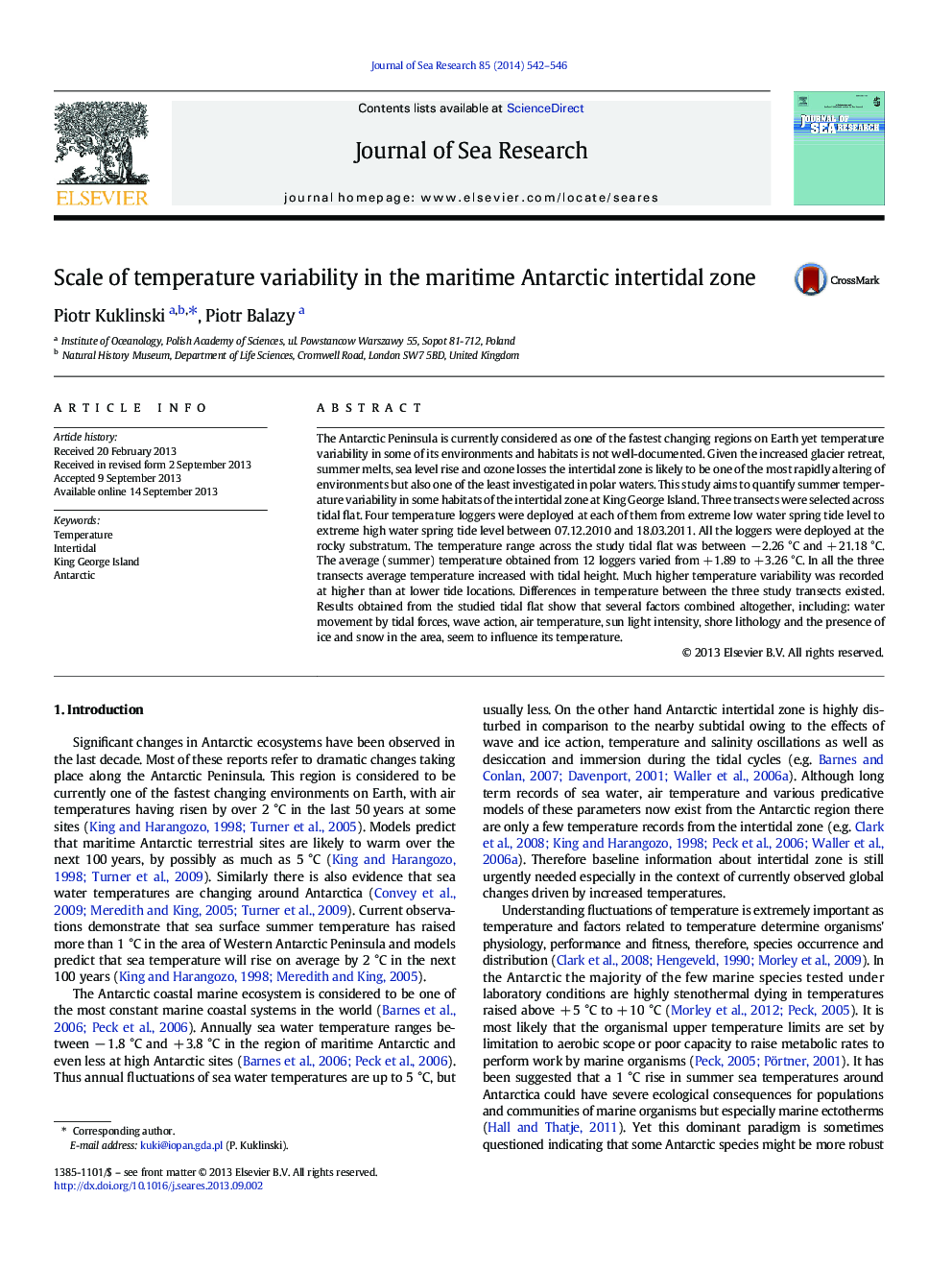| کد مقاله | کد نشریه | سال انتشار | مقاله انگلیسی | نسخه تمام متن |
|---|---|---|---|---|
| 6387460 | 1627489 | 2014 | 5 صفحه PDF | دانلود رایگان |
- This study aims to quantify summer temperature variability in the intertidal zone.
- The temperature across the study tidal flat ranged between â 2.26 °C and + 21.18 °C.
- The average (summer) temperature varied from + 1.89 to + 3.26 °C.
- Highest fluctuations in temperature were recorded at higher tide locations.
- Several factors combined seem to influence temperature at the tidal flat.
The Antarctic Peninsula is currently considered as one of the fastest changing regions on Earth yet temperature variability in some of its environments and habitats is not well-documented. Given the increased glacier retreat, summer melts, sea level rise and ozone losses the intertidal zone is likely to be one of the most rapidly altering of environments but also one of the least investigated in polar waters. This study aims to quantify summer temperature variability in some habitats of the intertidal zone at King George Island. Three transects were selected across tidal flat. Four temperature loggers were deployed at each of them from extreme low water spring tide level to extreme high water spring tide level between 07.12.2010 and 18.03.2011. All the loggers were deployed at the rocky substratum. The temperature range across the study tidal flat was between â 2.26 °C and + 21.18 °C. The average (summer) temperature obtained from 12 loggers varied from + 1.89 to + 3.26 °C. In all the three transects average temperature increased with tidal height. Much higher temperature variability was recorded at higher than at lower tide locations. Differences in temperature between the three study transects existed. Results obtained from the studied tidal flat show that several factors combined altogether, including: water movement by tidal forces, wave action, air temperature, sun light intensity, shore lithology and the presence of ice and snow in the area, seem to influence its temperature.
Journal: Journal of Sea Research - Volume 85, January 2014, Pages 542-546
